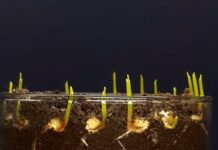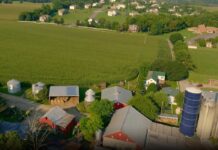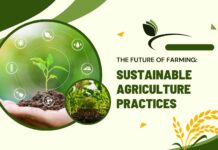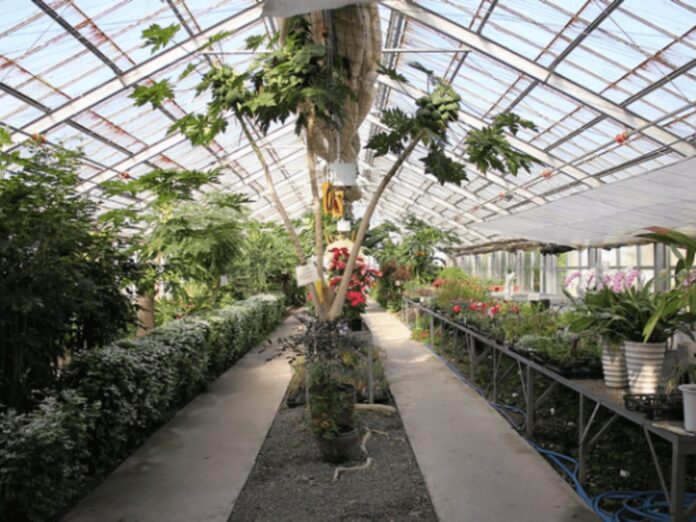
Papaya Farming in Greenhouse
Are you ready to grow Papaya in a controlled environment such as a playhouse or a greenhouse setting? Here’s some basic information about Polyhouse Papaya farming. The papaya plant is a member of the Caricaceae family. Papaya botanically called Carica papaya and is also known as papaw or pawpaw. Papaya originated in tropical America and has become a very common fruit thanks to its rapid growth, high yield, and high nutrient value. Papaya is primarily grown in the Andhra Pradesh, Karnataka, Gujarat, Orissa, West Bengal, Assam, Kerala, Madhya Pradesh, and Maharashtra states.
Climate and Soil condition for Papaya Farming in Greenhouse
In tropical climates, the papaya trees grow. The optimum temperature is 25 to 30 ° C and a minimum temperature of 16 ° C. For Papaya the appropriate pH value is between 6 and 6.5. The well-drained or sandy loam soil with sufficient organic matter is the primary essential for Polyhouse Papaya cultivation. In high rainfall areas, if the drainage is low and the roots are continuously drenched for 24–48 hours, the plants can die. Sticky and calcareous soils aren’t ideal because rainwater can collect even for a few hours in the soil. Higher raised beds and drainage ditch are highly recommended in this situation.
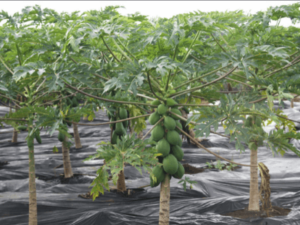
Continuous cropping in the same field can lead to poor growth and can cause Papaya trees to disease problems. The strong, cool, hot, dry, or salty wind doesn’t like a papaya tree. Papaya is better to grow in a sheltered place but full of sunshine. Staking and windbreak will diminish plant damage under strong wind.
Land Preparation for Papaya Farming
For the cultivation of Papaya, a well-drained upland is chosen. Papaya plants are vulnerable to strong winds or storms in open and high lying areas. Consequently, appropriate windbreaks should be planted at the orchard boundary for the proper establishment of the Papaya plantation.
Seed Source
The seed should be from a reliable source and sown at the earliest opportunity. The remaining seeds should be tightly sealed and kept in place at cool (5 -10 ° C) and dry (40% under relative humidity). For one hectare of planting 500 g of seeds are needed.
The season for Growing Papaya in Greenhouse
During the monsoon, winter, and spring season papaya trees are planted. It is not planted during the winter season because the frost can cause crop damage or injury. This means that papaya trees are planted during June-July (monsoon), October-November (autumn) or February-March (summer) months. The first few things to consider while farming in Papaya are heat, frost, and hot air, since all three cause plant injury.
Papaya Propagation
The papayas are usually grown from seed. Germination can take anywhere from 3 to 5 weeks. It is expedited to 2 to 3 weeks and by washing off the aril the percentage of the germination process increased. The seeds then want to be dried and powdered with a fungicide to prevent damping-off, a common cause of seedling failure.
Well-prepared seeds can be kept for up to three years but germination rate declines with age. Dip at 158oF (70oC) in hot water for 15 seconds, and then soak for 24 hours in distilled water after removal from storage, germination rate will improve. In some seasons, if germination is sluggish, gibberellic acid treatment may be required to get faster results.
Seeds can be planted directly in the field, or seedlings can be transplanted in beds or pots when they are 6 weeks old or up to 6 months old. Although great care should be taken in handling and the longer the delay the greater the risk of roots being dehydrated or twisted. In windy locations, transplantation often results in trunk curvature.
Seed Germination Process
The optimum range of temperatures is 21-27 ° C and 19-29 ° C of radical emergence. Depending on the temperature it takes 1 to 4 weeks from sowing to emerge. Thiram (TMTD) W.P can treat the seed. Until sowing for prevention of young plant fungal diseases.
 Facts of Papaya Farming in Greenhouse
Facts of Papaya Farming in Greenhouse
- A Polyhouse is normally made of polythene which is clear, strong, cheap and flexible. Fruit crops can be grown in these houses in any season of the year since temperature and humidity in Polyhouse can be easily controlled. Polythene absorbs the thermal radiation, which increases the temperature and provides sufficient energy for photosynthesis.
- Papaya trees grown under the Polyhouse are free from adverse conditions and hailstorms, heavy rains or burning sunlight. They are being protected from birds and other animals.
- Evaporation does not adversely affect the humidity of the Polyhouse farming resulting in less water requirement. In the Polyhouse’s restricted area management of insects and rodents is easy and cheaper.
- Before the Papaya seeds are sown, rotten manure is packed in 10x 15 centimeter shaped polythene bags together with the equal amount of soil and sand. Water is then sprinkled onto the bags and seeds are sown in the bags. Small holes are provided for quick ventilation in the bags. These bags are kept inside the Polyhouse until the Papaya plants grow to approximately 10-15 centimeters and then transferred to pots or earth.
- Every time to time these plants need to be given manure and water.
- The disease generally does not spread, if a little spray can be required at all.
- In order to earn maximum profit from the Papaya crops grown in the Polyhouse by maximizing production, it is not only necessary to pay due attention to the supply of manure and water to the plants and protect them from disease, but also their cleanliness and pruning are essential.
Fertilization
Because of its short youthful period, a Papaya tree needs more nutrients. This favors excellently organic soils. Apply 20 kg of farmyard manure each year per plant by mixing with 200 g of urea 400 g of potash muriate in February months or March. The mixture of manure and fertilizer must be spread about the plants within a radius of 40 cm.
Water Requirement
Water requirement for Papaya farming depends upon the area’s environmental factors such as sun, temperature, wind, type of soil, etc. This varies from the plant’s generation. A young plant in Papaya would want more humidity than the older ones. This is because of the slower vegetative growth of older Papaya trees. The seedlings are therefore irrigated once or twice a week while the fruit-bearing trees need irrigation once in every 15 days.
Watering Papaya normally takes place every 10 days in winter or every week in summer, but practice varies depending on the soil, climatic conditions and irrigation method. It is possible to do a ring method, furrow method, or irrigation by drip. Though, make sure that the water does not come into contact with the stem. Irrigation can avoid frost damage to the plants.
Transplanting of Papaya Seedlings
Seedlings are around 6 to 8 weeks after germination ready for transplantation into the field. Transport the seedlings to the field 3 to 4 days prior to the planned planting date to reduce planting tension. Protect them from the winds when transported to the sector. Avoid holding the seedlings in the plastic bags, by the stem. This can cause severe damage to the stem and root and the plants do not simply establish themselves in the field.
Pests and Diseases
Anthracnose, powdery mildew, stem rot, and damping-off are the main diseases that damage the Papaya trees. Waterlogging around roots is the main reason for the incidence of rots. Wettable sulfur, carbendazim, and mancozeb are the most effective controls for these diseases.
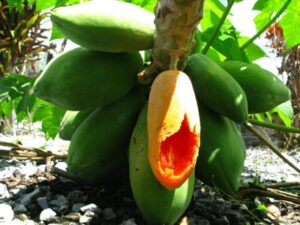
Papaya Harvesting
In general, it takes Papaya 6 months to bloom and another 5 months to harvest; however, it may vary depending on the climate conditions and management. The fruits must be harvested for shipment to distant markets when the apical starts turning black, and the latex is no longer milky. The Papaya fruits can be left on the tree during the cold months to develop deeper color and get a better flavor.
Papaya fruits are harvested when they are of full size, light green at the apical end with a tinge of yellow. On maturation, some types of papaya fruits turn yellow while some stay orange. The Papaya fruits are ideal for harvesting when the latex stops being milky and becomes watery.
The Papaya plant has an economic life of 3 to 4 years. The yield of Papaya varies widely depending on the orchard’s variety, soil, environment, and management.

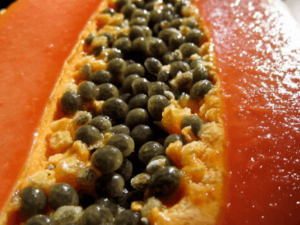 Facts of Papaya Farming in Greenhouse
Facts of Papaya Farming in Greenhouse